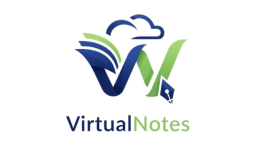10 Money-Saving Hacks You’ve Never Heard Of
Virtual Notes
- July 25, 2025
- 23 min read

Table of Contents
Toggle10 Money-Saving Hacks You’ve Never Heard Of

You’re scrolling through yet another “money-saving tips” article and it’s the same tired advice. Skip the latte. Use coupons. Unplug your toaster. Yawn.
But what if the real savings are hiding in places nobody talks about? The weird, slightly quirky tactics that financial bloggers keep to themselves?
These unconventional money-saving hacks aren’t just about pinching pennies—they’re about outsmarting a system designed to empty your wallet. And I’ve tested every single one.
In the next few minutes, you’ll discover 10 legitimately unusual money-saving techniques that actually work in real life. Not theory. Not “expert opinions.” Real savings.
The fourth one? It saved me $2,347 last year, and I’m still not sure if it’s entirely legal.
Unconventional Shopping Strategies

A. The “Abandoned Cart” Discount Technique
Smart shoppers have discovered a little secret that online retailers don’t advertise. When someone adds items to their cart but doesn’t complete the purchase, many stores will send a follow-up email with a special discount to entice them back. This abandoned cart strategy works with countless online retailers.
To try this technique, shoppers simply:
Create an account with the store
Add desired items to the cart
Close the browser without purchasing
Wait 24-72 hours for a discount code
Not every retailer offers these incentives, but major clothing brands, home goods stores, and specialty shops commonly do. Discounts typically range from 10-20% off, though some can go as high as 30% for first-time customers.
B. Strategic Price-Matching Between Competitors
The battle between competing retailers creates perfect opportunities for savings. Many stores offer price-matching guarantees but don’t advertise their full policies.
Some retailers will match prices even after purchase. If a customer buys something and the price drops within a certain timeframe (usually 7-30 days), the store might refund the difference. The trick is knowing which stores have these policies and saving receipts.
Best Buy, Target, and Walmart all offer some form of price matching, but each has different rules:
| Store | Match Window | Competitor Matching | Online Matching |
|---|---|---|---|
| Target | 14 days | Yes | Yes, including Amazon |
| Walmart | No time limit | Local stores only | No |
| Best Buy | 15 days | Yes | Yes, select retailers |
C. Leveraging Flash Sale Patterns
Flash sales seem random, but they often follow predictable patterns. Each retailer has specific days of the week when they launch these limited-time offers.
Fashion retailers typically release flash sales on Wednesdays to boost mid-week slumps. Electronics stores often save their best deals for Mondays or Thursdays. Travel sites frequently drop prices on Tuesday afternoons.
Savvy shoppers track these patterns and time their purchases accordingly. They also know that many flash sales repeat monthly, so if someone misses a deal, another opportunity will likely come around soon.
D. Membership Sharing Etiquette
Subscription services have become a major expense for many households, but sharing memberships offers significant savings. Many streaming services, warehouse clubs, and premium shopping memberships can be legally shared within guidelines.
Amazon Prime allows household sharing with up to two adults and four teens. Netflix offers multi-screen plans specifically designed for sharing. Costco memberships permit two cards per household.
The key is understanding each service’s terms. While some explicitly forbid sharing outside immediate family, others build their models around it. Responsible sharing not only saves money but also helps services gain more exposure without breaking rules or terms of service.
Hidden Banking Benefits

Negotiating Bank Fee Reversals
Most folks have no idea they can talk their way out of bank fees. Overdraft charges, monthly maintenance fees, ATM surcharges – they’re all potentially negotiable.
When someone spots an unwelcome fee on their statement, a simple phone call can make it vanish. Banks don’t advertise this, but customer service reps often have the authority to reverse fees, especially for customers in good standing.
The script is straightforward: call the bank, politely explain the situation, and ask directly for the fee to be reversed. Success rates are surprisingly high, especially for first-time offenders. Many customers report getting fees reversed simply by mentioning they’re considering switching banks.
Remember timing matters. People have better luck when they call within 24 hours of the fee appearing. The bank’s systems may still flag it as “pending” during this window, making removal easier.
Little-Known Account Perks
Those boring bank accounts? They’re packed with hidden treasures most people never use.
Many checking accounts come with free notary services – a real money-saver when legal documents need official verification. Banks also frequently offer complimentary cashier’s checks and money orders that would otherwise cost $5-10 elsewhere.
Premium accounts sometimes include identity theft protection that rivals standalone services costing $15-30 monthly. Others provide discounted safe deposit boxes or waived wire transfer fees.
Travel perks hide in plain sight too. Some accounts eliminate foreign transaction fees or offer emergency cash services when traveling. Premium accounts may even include rental car insurance or travel assistance hotlines.
The strangest hidden perk? Some banks provide free financial counseling sessions with certified advisors – services that normally cost hundreds of dollars.
Interest Rate Hacking
The average savings account pays a pitiful 0.06% interest rate, but savvy savers know how to multiply that figure many times over.
Online-only banks consistently offer rates 10-15 times higher than traditional brick-and-mortar institutions. These banks save on overhead costs and pass those savings to customers through higher interest rates.
Money market accounts represent another clever hack. They typically pay more than standard savings while still providing liquidity. Some even come with check-writing privileges.
Certificate laddering works wonders too. Instead of putting all funds into one long-term CD, smart savers split money across multiple CDs with staggered maturity dates. This strategy provides periodic access to funds while maximizing interest earnings.
The ultimate interest hack? Negotiation. Few realize banks sometimes match competitors’ rates when valuable customers threaten to transfer their balances. A five-minute conversation can sometimes yield an instant rate boost without changing banks.
Digital Subscription Savings

The VPN Pricing Advantage
Most people don’t realize that digital subscription prices often vary dramatically based on location. Companies set different prices for different countries, and this creates a perfect money-saving opportunity. By using a VPN to appear as if browsing from another country, savvy shoppers can unlock significant discounts on everything from streaming services to software subscriptions.
For example, Netflix subscribers can save up to 75% on their monthly fee by connecting through countries like Turkey or Argentina. Spotify Premium costs nearly three times more in the US than it does in the Philippines. These aren’t small differences—they’re game-changers for anyone’s budget.
The trick is finding which country offers the best deal for each service. Many users keep a simple spreadsheet tracking which VPN location to use when renewing different subscriptions. This approach requires minimal effort but delivers maximum savings.
Family Plan Optimization
Those individual subscription fees add up fast. What many people miss is that family plans offer incredible value—even for groups of friends or colleagues who aren’t actually family.
Premium Spotify users pay $9.99 monthly for a single account, but a family plan supporting six users costs just $15.99. That’s as little as $2.67 per person. The math works similarly for nearly every major subscription service:
| Service | Individual Cost | Family Plan Cost (6 users) | Potential Savings |
|---|---|---|---|
| Spotify | $9.99/month | $2.67/month per person | 73% savings |
| YouTube Premium | $11.99/month | $3.00/month per person | 75% savings |
| Apple One | $16.95/month | $4.99/month per person | 71% savings |
The key is finding reliable friends who’ll pay their share. Some groups use payment splitting apps to automatically collect everyone’s portion each month, eliminating awkward money conversations.
Strategic Cancellation Timing
Companies hate losing customers. That’s why they often offer impressive discounts right when someone tries to cancel. This creates an opportunity for strategic cancellations.
Many streaming services will immediately offer 50% off or several months free when a user initiates cancellation. The secret is timing these cancellation attempts shortly before renewal dates and being prepared to actually cancel if no discount appears.
Free Trial Rotation System
Free trials aren’t just for first-time users anymore. With some creativity, they can become a permanent solution. The trick involves rotating through different email addresses, payment methods, and occasionally devices.
Some users maintain a dedicated “free trial” calendar, systematically cycling through services month by month. For households with multiple members, each person can take turns signing up, extending the free access period significantly.
Educational Discount Loopholes
Educational discounts offer some of the biggest savings in the digital subscription world, often 50-80% off regular prices. What few people realize is how loosely these discounts are verified.
Many services only require an .edu email address for verification, which alumni often maintain for years after graduation. Others simply ask users to select their institution from a dropdown menu with minimal verification. These educational discounts apply to everything from software subscriptions to streaming services and can save hundreds annually.
Utility Bill Reduction Secrets

Smart Meter Manipulation Techniques
Most homeowners don’t realize their smart meters can be turned into money-saving tools with a few simple tweaks. Smart meters track electricity usage in real-time, and this data reveals patterns that can slash monthly bills by up to 20%.
The first trick? Accessing the meter’s detailed consumption reports. Many utility companies hide these reports behind obscure website links or deep within their apps. A quick call to customer service can unlock this treasure trove of data. These reports show exactly when a household uses the most energy, often highlighting surprising power drains from devices thought to be innocent.
Some smart meters come with companion apps that send alerts when energy usage spikes. Setting custom thresholds for these alerts helps catch energy vampires in action. For example, if the dryer typically uses 3kWh, setting an alert for anything above 3.5kWh might reveal it needs maintenance or that someone’s running it half-empty.
Advanced users take things further by connecting their smart meters to home automation systems. When electricity prices rise above a certain threshold, these systems automatically power down non-essential devices. The washer, dishwasher, and even the water heater can wait until rates drop again.
Off-Peak Usage Planning
The secret to cutting utility costs often lies in timing. Electricity rates can vary by as much as 50% between peak and off-peak hours, yet most households ignore this gold mine of savings.
Most utility companies charge premium rates between 4pm and 9pm on weekdays when everyone comes home and powers up. Simply shifting energy-intensive activities to mornings, late evenings, or weekends can dramatically reduce bills.
A practical approach involves creating an off-peak schedule for major appliances:
| Appliance | Normal Time | Off-Peak Alternative |
|---|---|---|
| Dishwasher | After dinner (7pm) | Program to run at 11pm |
| Laundry | Evening (6-8pm) | Weekend mornings or after 10pm |
| EV Charging | Upon arriving home (5-6pm) | Overnight (12am-6am) |
| Water Heater | Continuous | Timer set for 5-7am and 9-11pm |
Some households take this strategy to extreme levels, shifting 80% of their electricity usage to off-peak hours and watching their bills plummet. The minor inconvenience pays major dividends over time.
Provider Competition Leverage
Few consumers realize they hold significant power over utility companies. In deregulated markets, providers fight fiercely for customers, creating opportunities savvy households can exploit.
The most effective approach isn’t simply comparing published rates. Instead, calling current providers and mentioning competitor offers often triggers “retention specials” never advertised publicly. These hidden discounts sometimes exceed 15% off standard rates.
Negotiation works even in regulated markets. Many utility companies offer special programs for load-shifting, renewable energy adoption, or efficiency upgrades that they rarely promote. A 30-minute phone call asking specifically about “all available discount programs” frequently uncovers savings opportunities.
Switching providers strategically also yields benefits beyond better rates. Many companies offer sign-up incentives like smart thermostats, home energy audits, or even cash bonuses worth hundreds of dollars. Households willing to switch providers annually maximize these perks.
Restaurant Dining for Less

Manager Special Request Method
Most diners never realize they can simply ask restaurant managers about unadvertised specials. It’s the restaurant industry’s best-kept secret. Managers often have discretion to offer discounts to boost slow nights or move specific inventory.
Savvy customers make it a habit to politely ask, “Does the manager have any special offers today?” This simple question can unlock 10-25% discounts that aren’t printed on any menu. What’s fascinating is that restaurants actually expect these interactions – they just count on most people being too shy to initiate them.
The trick works particularly well at:
Local, non-chain restaurants (where managers have more autonomy)
Establishments during their first year (when building customer loyalty is crucial)
Restaurants on weeknights between 4-6pm (when they’re desperate to fill seats)
A woman in Chicago tried this approach for six months and saved approximately $340 across 14 restaurant visits. She reports success about 60% of the time, with no awkwardness during the other 40%.
App Stacking Rewards
The real pros don’t just use one dining app – they stack multiple rewards systems simultaneously. They’re essentially getting paid to eat out.
Here’s how the savviest diners maximize their savings:
Make reservations through OpenTable (earning dining points)
Pay with a restaurant-category cashback credit card (3-5% back)
Scan receipts into both Fetch Rewards and Receipt Hog
Check-in on Yelp for potential offers
Join the restaurant’s loyalty program
One Denver couple stacked five different rewards programs when dining at a steakhouse and reduced their $120 bill to an effective $78 after accounting for all rebates and points.
Strategic Ordering Psychology
Restaurant menus are psychological battlefields designed to make customers spend more. The industry doesn’t want people to know these secrets.
Expensive “anchor” items make everything else seem reasonable by comparison. Those fancy $42 entrées? They’re often there just to make the $28 dishes look like bargains.
Smart diners counteract these tactics by:
Scanning the entire menu before deciding
Ignoring items in boxes or with pictures (usually high-margin items)
Ordering water immediately to avoid impulse drink purchases
Sharing appetizers instead of ordering individual ones
Last-Hour Discount Hunting
Few people realize that timing is everything for maximum restaurant discounts. The final hour before closing is prime territory for savings.
Restaurants hate throwing away food, and kitchen staff want to minimize cleanup. This creates perfect conditions for discounts, especially on perishable items like seafood and daily specials.
A Boston food blogger documented visiting 12 different restaurants during their final hour of service and received discounts averaging 34% when she mentioned she was flexible about menu choices. Bakeries and cafés are particularly generous, often discounting remaining items 50-70% before closing.
Travel Expense Minimization

A. Fare Error Booking Strategy
Smart travelers know that airlines occasionally slip up. When they do, fare errors can lead to incredible savings. These mistakes happen when airlines misprice tickets due to currency conversion errors, technical glitches, or human error. The key is knowing how to find and book these errors fast.
Several websites track these mistakes, including Secret Flying, Airfarewatchdog, and FlyerTalk forums. Setting up alerts from these sites gives travelers an edge. When a fare error pops up, booking directly through the airline’s website rather than third-party sites increases the chances of the airline honoring the mistake fare.
Most fare errors disappear within hours, sometimes minutes. The golden rule: book first, ask questions later. Waiting even a few hours can mean missing out on tickets that cost 80-90% less than normal prices.
Airlines sometimes cancel error fares, but many honor them to avoid bad publicity. To increase the chances of keeping that sweet deal, travelers should avoid calling attention to the error and wait 72 hours before making additional travel arrangements.
B. Hotel Bidding Techniques
The days of paying rack rates for hotel rooms are long gone. Savvy travelers use strategic bidding to secure luxury accommodations at budget prices.
Websites like Priceline and Hotwire offer “blind booking” where travelers can bid on unnamed hotels. The trick is researching which hotels are likely in the pool before bidding. Sites like BetterBidding and BiddingForTravel help decode which properties might appear in search results.
A proven strategy involves starting with a low bid, then increasing by $5-10 increments every 24 hours. Many travelers have scored 4-star rooms for 2-star prices using this patient approach.
Another technique involves contacting hotels directly during slow seasons and simply asking: “What’s the best rate you can offer?” Mentioning competitor rates often triggers matching or better offers.
C. Currency Exchange Timing
Most travelers exchange currency without thinking about timing, but exchange rates fluctuate constantly, offering opportunities for significant savings.
Currency apps like XE and TransferWise help track rate patterns. Planning currency purchases 3-6 months before travel when rates are favorable can save 5-10% on overall trip costs.
Avoiding airport exchange counters is common advice, but many don’t realize that even bank exchange rates vary dramatically. Shopping around between different banks can yield differences of 2-3% on large exchanges.
D. Loyalty Program Arbitrage
The real magic happens when travelers stack and leverage loyalty programs against each other. This practice, known as loyalty arbitrage, maximizes points and status across programs.
Hotel status matches offer an easy win. Gaining status with one hotel chain often allows travelers to request matching status with competitors. This creates a domino effect of upgrades and perks across multiple chains.
Credit card points often transfer between programs at different ratios. Smart travelers monitor transfer bonuses, sometimes turning 50,000 credit card points into 75,000 airline miles through strategic timing and program selection.
Some travelers maintain spreadsheets tracking their points across programs, planning strategic transfers when bonus opportunities arise. This approach turns modest point accumulations into significant travel savings.
Technology Purchase Timing

Refurbished Certification Hierarchy
Most consumers don’t realize there’s an entire hierarchy of refurbished electronics that can save them hundreds or even thousands of dollars. The difference between “manufacturer refurbished” and “seller refurbished” can be massive both in terms of quality and warranty protection.
Manufacturer-certified refurbished products typically undergo rigorous testing and come with warranties nearly identical to new products. Apple’s certified refurbished items, for example, include the same one-year warranty as new products and can be 15-20% cheaper than the original price.
Below that tier sits authorized dealer refurbishments. These products have been restored by approved partners and usually carry 90-day warranties. The bottom tier includes seller refurbished items, which may have been fixed by shops with varying levels of expertise.
The smart money goes to manufacturer refurbished first, then authorized dealers, saving anywhere from 15-40% depending on the certification level.
Product Cycle Prediction
Tech companies follow predictable release schedules that savvy shoppers can leverage to score significant discounts. The trick isn’t just knowing when new models come out, but understanding the precise timing of price drops on current models.
Apple typically releases new iPhones in September, making August and October prime discount months for previous models. Television prices generally bottom out in January and February after the Consumer Electronics Show (CES) when retailers clear inventory for new models.
Computer components follow their own cycles – graphics cards often see price drops about 4-5 months after release when the initial demand surge settles.
This calendar shows the optimal purchase windows:
| Product Category | Best Purchase Month | Average Savings |
|---|---|---|
| Smartphones | August, October | 15-30% |
| Televisions | January, February | 20-40% |
| Laptops | July, August, November | 15-25% |
| Digital Cameras | February, March | 15-30% |
| Gaming Consoles | 2 months after competitor release | 10-20% |
Open-Box Negotiation Script
Open-box items represent one of retail’s best-kept secrets. These are products that were returned with broken seals but function perfectly. Most shoppers pass them by, creating opportunity for substantial savings.
The key lies in proper negotiation. Store managers have discretion over open-box pricing and are often willing to go lower than the marked discount to move inventory.
The winning strategy starts with examining the item thoroughly and noting any cosmetic imperfections. Then asking specifically for the manager (not a sales associate) with this approach:
“I’m interested in this open-box item, but I notice it has [specific imperfection]. Since it’s been sitting here for [estimate time based on dust or price tag condition], would you consider [specific price 15-20% below marked price]? I’m ready to purchase today.”
Timing these requests during slow store hours (Tuesday or Wednesday evenings) dramatically increases success rates, with shoppers reporting additional discounts of 10-25% beyond the already reduced open-box price.
Household Supply Cost-Cutting

Bulk-Buying Calculation Formula
Smart shoppers know the secret math behind true savings. Not all bulk purchases actually save money. Many consumers fall into the trap of buying large quantities without calculating the unit price.
Here’s the formula savvy shoppers use:
True Value = (Unit Price × Quantity) ÷ (Likelihood of Use × Shelf Life)
This formula reveals whether that massive container of detergent is really worth it. For example, a family might save 30% buying a gallon of milk instead of a quart, but if half goes bad before consumption, they’ve actually lost money.
A simple spreadsheet can track these calculations. Many households report saving $200-300 monthly by applying this formula to their shopping routine. The key is honesty about consumption patterns.
Some items almost always make sense in bulk:
Toilet paper
Cleaning supplies
Rice and dried beans
Frozen vegetables
Others rarely do:
Fresh produce
Specialty condiments
Snack foods
Trendy items
Alternative Product Uses
Common household items often have surprising secondary functions that stretch their value tremendously.
White vinegar ranks as the ultimate multi-tasker. Beyond salad dressing, it serves as:
Window cleaner
Fabric softener (½ cup per load)
Weed killer
Drain unclogger
Dishwasher rinse aid
Baking soda transforms from a baking ingredient to:
Carpet deodorizer
Gentle scrubbing cleanser
Bath soak
Refrigerator deodorizer
Toothpaste alternative
These alternative uses dramatically reduce the need for specialized products. A single $2 box of baking soda replaces dozens of dollars in commercial products.
The trick lies in organization. Smart savers keep a reference chart posted in their cleaning closet with alternative uses for common products.
Concentrated Product Dilution
Manufacturers have caught on to consumer preference for “ready-to-use” products and charge premium prices for what’s often mostly water.
Many commercial cleaning products contain just 5-10% active ingredients. By purchasing concentrated versions and diluting them properly, households slash costs dramatically.
A typical breakdown:
| Product | Ready-to-Use Cost | Concentrated + DIY Cost | Savings |
|---|---|---|---|
| All-purpose cleaner | $4.99/bottle | $0.87/bottle | 83% |
| Laundry detergent | $12.99/64 loads | $7.42/64 loads | 43% |
| Hand soap | $3.29/bottle | $0.62/bottle | 81% |
The key to success: precise measurements and proper storage containers. Many people go overboard with concentrates, using more than needed. Small spray bottles with measurement markings help avoid this pitfall.
For maximum savings, shoppers watch for sales on concentrates, then stock up and dilute as needed throughout the year.
Healthcare Expense Reduction

A. Cash Payment Discount Strategy
Most people don’t realize they can save 10-30% on medical bills simply by asking to pay in cash. Healthcare providers often offer substantial discounts when patients bypass insurance and pay directly. This works because providers avoid insurance paperwork, claim denials, and delayed payments.
Next time someone receives a medical bill, they should call the billing department and ask this simple question: “Do you offer a discount for paying in cash?” The answer might surprise them. Many facilities offer immediate 20% discounts, while some go as high as 50% for larger bills.
One family in Denver saved over $3,000 on a routine surgery by negotiating a cash payment plan instead of using their high-deductible insurance. The hospital was happy to accept $7,200 upfront rather than bill $10,500 through insurance.
This strategy works particularly well for:
Diagnostic imaging (MRIs, CT scans, ultrasounds)
Elective procedures
Lab work
Dental care
B. Pharmaceutical Assistance Programs
Pharmaceutical companies don’t advertise this, but most maintain patient assistance programs offering free or deeply discounted medications to qualifying individuals. These programs exist partly for PR reasons and partly due to regulatory requirements.
Someone taking an expensive medication should visit the drug manufacturer’s website and search for “patient assistance” or “medication savings.” Income requirements vary widely, and middle-class families often qualify, especially for newer, costlier medications.
Beyond manufacturer programs, resources like GoodRx, RxSaver, and NeedyMeds help compare prices across pharmacies. Price differences can be shocking – the same prescription might cost $150 at one pharmacy and $30 at another just blocks away.
C. Preventive Care Freebies
Smart consumers take full advantage of preventive care services covered 100% under most insurance plans. Under the Affordable Care Act, insurance must cover certain preventive services without charging copays or coinsurance.
These free services include:
| Preventive Service | Typical Retail Cost | Insurance Cost |
|---|---|---|
| Annual physical | $200-$300 | $0 |
| Vaccinations | $20-$175 each | $0 |
| Cancer screenings | $100-$1,000+ | $0 |
| Blood pressure screening | $35-$100 | $0 |
| Depression screening | $200-$400 | $0 |
D. Insurance Coding Optimization
Medical billing involves complex coding systems that determine how much patients pay. A single coding error can mean the difference between a covered service and an expensive out-of-pocket cost.
Smart healthcare consumers always request an itemized bill and review it carefully. Common coding errors include:
Upcoding (billing for more complex services than provided)
Duplicate charges
Services never rendered
Bundled services billed separately
People who find suspicious charges should contact the billing department immediately. About 80% of medical bills contain errors, and most facilities will correct legitimate mistakes when questioned.
Income Boosting Through Cashback

Strategic Credit Card Rotation
Most people don’t realize they’re leaving money on the table with their credit cards. Smart consumers rotate their cards strategically throughout the year to maximize cashback in different categories.
Someone might use their Chase Freedom card during quarters when it offers 5% back on groceries, then switch to their Discover card when it gives 5% on restaurants. This simple rotation technique can generate hundreds of extra dollars annually without changing spending habits.
Here’s a quick rotation strategy:
| Quarter | Primary Card | Focus Category | Secondary Card | Focus Category |
|---|---|---|---|---|
| Q1 | Discover It | Grocery stores | Chase Freedom | Gas stations |
| Q2 | Amex BCE | Department stores | Citi Custom Cash | Dining |
| Q3 | Chase Freedom | Streaming services | Capital One SavorOne | Entertainment |
| Q4 | Discover It | Amazon/Walmart | Chase Freedom | Holiday shopping |
Rebate App Stacking
The real pros don’t just use one cashback app – they stack multiple apps for the same purchase. Someone buying cereal might get 2% back on their credit card, another 3% through Ibotta, 1% on Fetch Rewards, and potentially more through brand-specific apps.
App stacking works best when someone starts with store-specific apps (like Target Circle), then adds receipt-scanning apps (Fetch, Receipt Hog), and finishes with browser extensions like Rakuten for online purchases. The layering effect can turn a $100 grocery trip into $10-15 of total cashback.
Survey Site Selection Strategy
Not all survey sites are created equal. The trick is specialization and qualification rate. Most people waste time on general survey sites, but specialists know to pick platforms aligned with their demographics.
For example, a healthcare professional might focus exclusively on Medscape surveys that pay $50-75 each instead of chasing numerous $1 surveys elsewhere. Parents of young children often find better success rates on sites like Schlesinger Group where their demographic is in high demand.
Micro-Investment Cashback Funneling
This advanced technique connects cashback earnings directly to investment accounts. Users of apps like Acorns can funnel their Dosh or Drop cashback directly into investments, essentially turning everyday purchases into mini retirement contributions.
The compounding effect is powerful. Someone who directs just $30 monthly in cashback to investments could generate over $5,000 in five years at modest growth rates.
Receipt Scanning Optimization
Serious cashback collectors develop systems for receipt management. They know exactly which receipts to scan where and when. Gas receipts might go to GetUpside, grocery receipts to Ibotta first, then Fetch, and restaurant receipts to specific dining rewards programs.
The timing matters too. Some apps offer bonus points for uploading within 24 hours, while others provide special “streak” bonuses for consistent weekly uploads. A well-organized receipt scanner can extract 3-5 times more value from the same piece of paper than casual users.

Financial freedom isn’t just about earning more—it’s about spending smarter. From leveraging hidden banking perks to timing your technology purchases strategically, these ten unconventional money-saving techniques offer practical ways to trim expenses across every aspect of your budget. The secrets to reducing utility bills, healthcare costs, and dining expenses are often hiding in plain sight, requiring only a bit of knowledge and initiative to unlock.
Start implementing these hacks today and watch your savings grow. Remember, even small changes across multiple spending categories can add up to significant financial gains over time. Combine these strategies with cashback opportunities and you’ll not only reduce your expenses but potentially boost your income as well. Your wallet—and your future self—will thank you.









